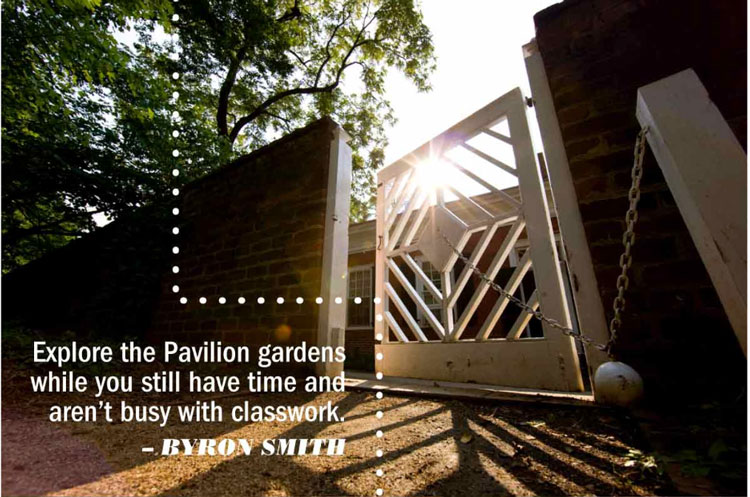Campus tours from a distance: Best practices in virtual open houses for international students
- Going to an in-person campus tour is still out of reach for many international students and agents, so the virtual open house remains a powerful option for education marketers
- We’ve pulled together some of the best practices for creating and executing these events based on advice experts in the field
More than two years into the pandemic, it remains challenging and expensive for education recruiters to travel to other countries to meet students and for students/agents to make their way to in-person open houses at overseas campuses. At the same time, demand for study abroad is picking up nicely and students are keenly interested in getting a good sense of the atmosphere, facilities, and culture of the institutions to which they’re considering applying. With all of that in play, designing and executing a great virtual open house (aka virtual tour) is an increasingly important way of nudging international students along the enrolment funnel.
These virtual events can range from deluxe virtual reality experiences to videos or slide shows and they are often enabled by companies specialising in this particular digital capability, or on more general-purpose platforms such as Zoom. They can be enhanced when participants have a VR headset but can be successful without this feature as well. Some are entirely pre-recorded, while some integrate live elements for a more real-time feel.
Virtual open houses are an investment, requiring significant time, budget, and staff resources, so it’s essential to understand proven practices in creating them so that that investment pays off. We researched some of the best practices articulated by virtual event experts and present top insights here for you to consider.
Virtual open houses should complement your marketing
If a student has signed up for your virtual open house, they have almost certainly checked out your institution’s website and social media channels. They will have researched your institution’s programmes and areas of academic strength and decided that these are compelling enough to want to know more. The virtual open house is a chance to complement the other, more informational parts of your marketing by appealing to the emotional side of students’ (and parents’) decision making. The opportunity here is to connect prospects to current students and successful alumni and to fun parts of the campus (athletic centres, dining halls, residences, events) through pre-recorded and even live (i.e., real-time) sections of the open house. At the end of the open house, they should feel more connected to, excited about, and invested in your institution or school.
Any live parts of the open house should allow students to imagine themselves walking around on campus. An article on education marketing agency ED. elaborates:
“[In a campus walkabout in real-time] … Is it snowing? Great! Students will get to see what campus is like in winter. They’ll be able to imagine themselves shivering as they shuffle to the next building for class. If your live portion can emulate any part of your original open house experience while still being high energy, by all means, use it.”
ED. adds, “A prospective student expects to be able to walk around campus, peek in the dining halls, sit in a lecture hall, and witness the student culture play out right before their eyes.”
Determine clearly articulated goals
Providing students with an experience-focused event that allows them to understand more fully what it would be like to study at your institution is a smart idea, but it’s not enough. There should be clearly defined goals and KPIs attached to the event that relate to the overarching need to convince students to apply to your institution. In her 2020 New York Times article on virtual tours, Dionne Searcey writes,
“Enrolment management experts recommend using the “so what?” approach to admissions events. Break down the purpose, desired experience, and outcome students and parents should have in each component of the event. After identifying the core of each event or interaction, consider how online tools can be used to achieve it.”
Virtual event platform vFairs adds,
“The virtual environment makes it very easy for you to track registrant information through the event landing page which eases pre-event reminders and post-event follow-ups. Many virtual event platforms also provide rich reports on event turnout, performance, engagement, and conversions. These insights are … imperative to determining your event ROI and improving future events.”
Keep it dynamic
A virtual open house should not feel like a presentation that students have to sit through. It should feel dynamic, and it should be structured around questions that students want to know the answers to. It should move around – not only in terms of different parts of the campus – but also in terms of perspective. vFairs recommends having “different touch points peppered throughout the virtual open day allowing participants to interact with different university stakeholders,” for example:
“Have the faculty deliver webinars and the university admin head Q&A sessions and power chats. At the same time, have a booth or auditorium dedicated entirely to enable visitor interactions with existing students and university alumni. Here, the former can give prospective students a candid take on the campus life and the latter can share some insight on the employed life post-graduation.”
Pick a good time
International students are in different time-zones and have different schedules and holidays than students currently on your campus. It would be mistake to start the event at 6:00 am on a Saturday, for example, or in the middle of a religious holiday. Talk to contacts in the countries and cities that are on your priority list for enrolments to decide on an optimal day and time for the open house.
Also important: Don’t overestimate how much time your registrants want to spend attending your event on one particular day. vFairs elaborates:
“As best practice, virtual open days perform best when they’re spread over 2 days going live for anywhere between 3-5 hours each day. Since visitors login, get what they want and leave, attendance drops considerably after the mentioned duration. To make the most of this insight, try to schedule your most important online sessions and surveys early in the event so that they receive maximum turnout.
What’s great about virtual open days is that they can be left open to visitors when it is not live or when the event has been wrapped up. Those who could not make it to the live event can still benefit from your content and display which enables the event to continue delivering impact long after it has been completed.”
Devote a great deal of planning to answering questions in real-time
The virtual open house offers this advantage over a pre-recorded video: it allows students to ask questions the minute those questions pop into their heads. And once they ask them, say via a chat function, they will 100% be waiting expectantly for a near-immediate answer. The more they wait, the less impressed with your institution they will be. The more quickly and helpfully their questions are answered, the more they will equate your well-considered response planning with excellent administration and supports for students on campus.
Make it possible to follow up with registrants – then make sure you do
In designing registration forms, ask students to provide information about themselves that will allow you to answer their questions more helpfully than if they only provided their emails (e.g., programme interests, desired start date, etc.). On top of answering students’ questions during the event, make sure to connect with them after. Ask them if they have any more questions, direct them to the recorded event link, and provide links to other institutional marketing channels such as YouTube, Facebook, and Instagram. If your institution has impressive post-graduation employment stats, include them. Video testimonials from satisfied current students and alumni are also very powerful in stimulating the emotional side of prospects’ decision-making.
Consider a bigger virtual investment
If you are already investing in a virtual open house, consider developing an all-in-one virtual hub. If this seems like too much of a stretch for your institution’s resources, consider this: what you’re looking for is return on investment. Creating a page on the institutional website containing a suite of virtual and online marketing efforts is more likely to draw students in for regular and repeat visits and to extend your audience beyond the students who have registered only for your virtual open house. What’s more, because it’s on the institutional website, the page can include links straight to other conversion pages (e.g., the “contact us” or application information page). For example, before moving its traditionally in-person campus tour “Days on the Lawn” to an online tour when the pandemic began, the University of Virginia created a “Virtual Grounds” section on their website. This section included the virtual tour but also, as profiled in Hanover Research’s Best Practices in Virtual Admissions Guide:
- A TikTok account for prospective and new students with “U-Guide” videos “designed to foster a connection between applicants/accepted students and campus culture, and promote visibility through the platform’s recommendations algorithm”;
- Beautifully presented suggestions from alumni about what spots on and around the campus they would most recommend to new students;
- Current students’ testimonials and advice about studying at the university;
- A link to the university’s dedicated admissions Instagram that sometimes features “student takeovers” where a selected student posts an Instagram story about their experience, which are then cross-promoted on other social media accounts;
- A link to the university’s YouTube account that maintains playlists for student spotlights and student experience videos, as well as a playlist with 3D campus views augmented with text descriptions.

For additional background, please see:
















